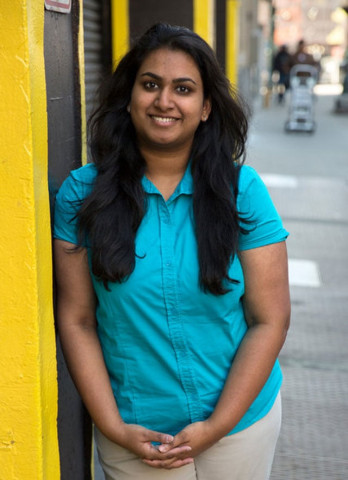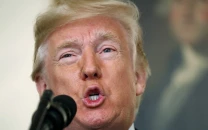New US rule extends stay for some foreign graduates
This rule is yet another flash point in the controversy over immigration reform

Shruthi Aramandla, 24, a native of India who received a master’s degree in engineering from New York University in May, said she would be able to stay longer in the United States under the new rule. PHOTO: James Estrin/The New York Times
Aramandla will apply in April for a visa, known as an H-1B, for so-called skilled foreign workers. But Congress caps those yearly at 65,000, with an additional 20,000 slots for graduates with advanced degrees like Ms. Aramandla.
The government received nearly four times as many applications for those visas as were accepted in last year’s lottery.
This rule is yet another flash point in the controversy over immigration reform. Industry leaders who say they are desperate for skilled talent and those defending the rights of American workers see the training program’s extension as an end-around to stalled reform. But that is all they agree upon.
The university 'scam' and $40m lawsuit stalking Trump
“It’s an ongoing assault on American workers,” said John Miano, a lawyer for a technology workers’ union in Washington State, whose lawsuit last summer was what forced the government to vacate the previous rule and create a new one, this time for public comment.
“They are just trying to double down on what they’re doing before,” he said of the government. “‘OK, you didn’t like 29 months? We’ll make it 36 months.’”
Miano says his group, the Washington Alliance of Technology Workers, is still arguing the legality of the program in an appeal. The next hearing will be in May at the United States Court of Appeals for the District of Columbia.
The government posted a similar version of the rule in the federal register in October, drawing more than 50,500 comments. (Death threats to President Obama were removed, officials said.) A large number of commenters who said they were foreign students supported the rule. But there were also comments from people who identified themselves as unemployed technology workers or concerned citizens who believed the government “was destroying this country,” and thought that it showed the government was “standing with illegals.”
The new rule states directly that “a STEM OPT student would not replace a full- or part-time, temporary or permanent US worker,” and that the salary offered would “be commensurate” to American workers.
India orders universities to display large flags after protests
Officials with the Immigration and Customs Enforcement agency said they tried to tighten training programs, mandate oversight of employers and make sure that the students come from accredited universities in an effort to prevent fraud.
“In our mind, it enhances training and puts safeguards in to make sure that if you are an employer that you are not unfairly disadvantaging US workers,” Rachel Canty, deputy director for the agency’s Student and Exchange Visitor Program.
The agency said it would provide help sessions for eligible students, employers and academic institution on its website on Friday.
Aramandla, who works for Loring Consulting Engineers and designs heating, ventilation and air-conditioning systems for schools in New York, said her training would not be applicable in India, nor would she find the same work environment there; as a woman in India, she feels she would not be as respected as she is in the United States.
Michael DesRochers, the president of Loring, said Aramandla was an integral employee in his technical work force, which is 7 percent foreign.
“The labor market is tight,” DesRochers said. “We don’t look at it as the international students are taking away American opportunities. We feel we’re offering to all.”
His company’s work may intersect again with the new rule: Recently, his engineers replaced the ventilation and mechanical systems for the United States Supreme Court.
This article originally appeared on the New York Times, a partner of The Express Tribune.



















COMMENTS
Comments are moderated and generally will be posted if they are on-topic and not abusive.
For more information, please see our Comments FAQ